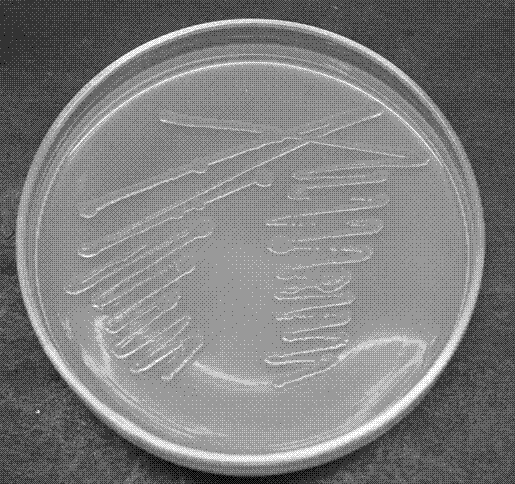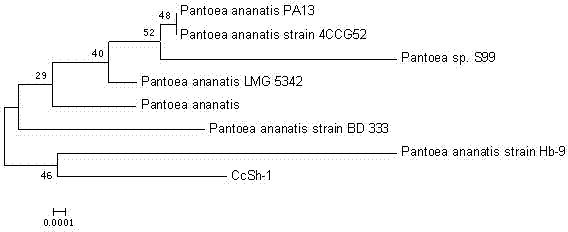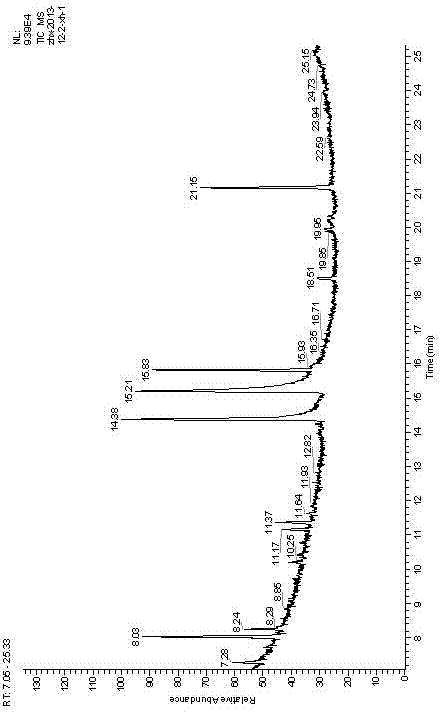Cymbopogon citratus fragrance-producing endophytic bacterium
A technology of endogenous bacteria and fragrance, applied in the direction of bacteria, microorganisms, and methods based on microorganisms, to achieve the effect of great development potential
- Summary
- Abstract
- Description
- Claims
- Application Information
AI Technical Summary
Problems solved by technology
Method used
Image
Examples
Embodiment 1
[0018] Embodiment 1: the biological identification of bacterial strain
[0019] 1. Strain Morphological Characteristics
[0020] (1) Morphological characteristics of the colony population: the monoclonal colony was streaked and inoculated into NA solid medium, the plate was placed upside down in a constant temperature incubator, and incubated at 27°C for 1 to 3 days, the colony was light yellow, the surface was smooth and moist, and the edges were round. See attached figure 1 .
[0021] (2) Individual morphological characteristics of the bacteria: Gram staining was carried out on the strain, and observation with an optical microscope showed that the strain was a short rod-shaped, Gram-negative bacterium.
[0022] 2. Strain 16S rRNA Analysis
[0023] Bacterial Genomic DNA Extraction Kit (Shanghai Jierui Bioengineering Co., Ltd.) was used to extract the genomic DNA of the strain. Using the DNA as a template, the bacterial 16S rRNA general primer (27F, 1492R) was used ...
Embodiment 2
[0026] Embodiment 2: Analysis of the volatile fragrance produced by the bacterial strain of the present invention
[0027] The obtained strains were inoculated into NB liquid medium, cultured with shaking at 27°C and 170r / min, and the growth characteristics of the strains in NB liquid medium were observed, and samples were taken every hour to measure the OD change of the culture medium with an ultraviolet spectrometer. To depict its growth curve, see appendix image 3 .
[0028] Using HS-GC-MS analysis method for Pantoea sp. CcSh-1 volatile aroma substances for detection 。
[0029] 1. Experimental parameters
[0030]American Thermo-Finnigan Trace GC, Polaris Q, gas chromatography-mass spectrometry, Tri plus RSH three-in-one autosampler and NIST08 spectral library.
[0031] Chromatographic conditions: DB-5 quartz capillary column, 30 m × 0.25 mm × 0.25 μm, the column temperature was programmed to rise, the initial temperature was 60 °C, kept for 2 min, then increased ...
PUM
 Login to View More
Login to View More Abstract
Description
Claims
Application Information
 Login to View More
Login to View More - Generate Ideas
- Intellectual Property
- Life Sciences
- Materials
- Tech Scout
- Unparalleled Data Quality
- Higher Quality Content
- 60% Fewer Hallucinations
Browse by: Latest US Patents, China's latest patents, Technical Efficacy Thesaurus, Application Domain, Technology Topic, Popular Technical Reports.
© 2025 PatSnap. All rights reserved.Legal|Privacy policy|Modern Slavery Act Transparency Statement|Sitemap|About US| Contact US: help@patsnap.com



